

The Nile didn't just provide food for the ancient Egyptians, it also served as a main highway. Too wide to be bridged, a great many ferryboats carried people and wares from one shore to the other. The wind blowing mostly from the North, sailing upriver on the wide, meant travel on the meandering Nile was relatively easy and fast. Boats often carried large crews in case there was no wind or it blew in the wrong direction. Depictions show cargo ships/barges having a pilot who stood in the bow holding a long pole used to measure the water's depth, then shouting his orders to the helmsman. Blocks of rock weighing many tens of tons and obelisks weighing hundreds were carried downstream from the quarries in Upper Egypt to the building sites of pyramids and temples.
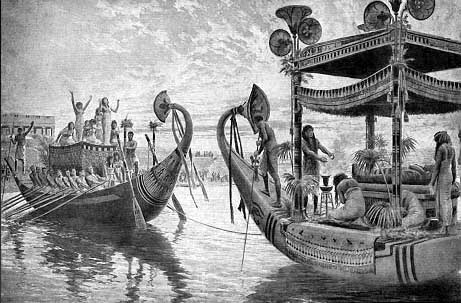
In ancient Egypt, the funerary boat transported a mummy to its final resting place or, if buried with the deceased, took soul of the dead on its eternal journey.
The 19th century print above shows an ancient Egyptian funeral barge facing another boat upon which priestesses are raising their hands (and voices) in lamentation. The boats of ancient Sumer, Babylon and Egypt were not made of wood, but bundles of tightly packed reeds. In the Mesopotamian region, a tall fresh water reed called berdi was used while in Egypt papyrus was the building material. Reeds were tied tightly together in bundles, narrowing towards the ends. The tightness of the lashings is critical in keeping water impregnation to a minimum. The bundles are lashed together with the ends then curling up in the traditional fashion for the papyrus ship. Bamboo or cane seems to have been the traditional material used for constructing the square cabins seen in many pictures and reliefs.
The hidden river/road of Ament is the burial way in Underworld. The body of the deceased Pharaoh travels down the river of Ament (which has no water) in his funeral barque. The Pharaoh makes his way by the words of Isis and Shemsu. The utterances of this great god act as magical protection and perform the slaughter of Apep, who is the serpent/womb in the Duat Underworld in his circle of windings in the sky. "I purify myself. I assume my pure throne, which is in the sky. I will endure. I assume my pure seat in the bow of the Barque of Ra. It is the sailors who row Ra and it is they who will convey me round the horizon." ("What Is In The Duat /Underworld" - Utterance 407). Many important Egyptian gods are seen in boats during ritual processions. Such boats symbolize important sacred time periods.
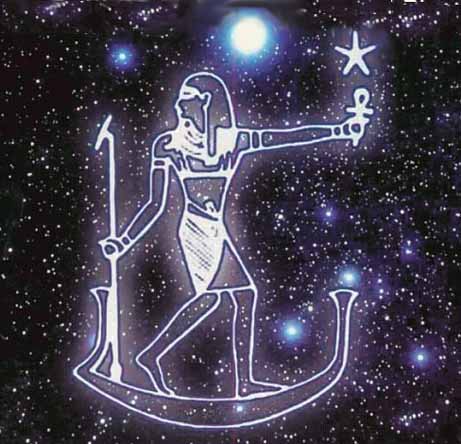
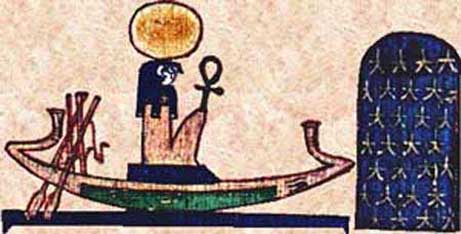
A solar barge (also solar bark, solar boat, sun boat) is a mythological representation of the sun riding in a boat. Many early Egyptian goddesses/sun deities, as well as the gods Ra and Horus, are sometimes depicted as riding in a solar barge. In Egyptian myths of the afterlife, Ra rides in an underground channel from west to east every night so that he can rise in the east the next morning.
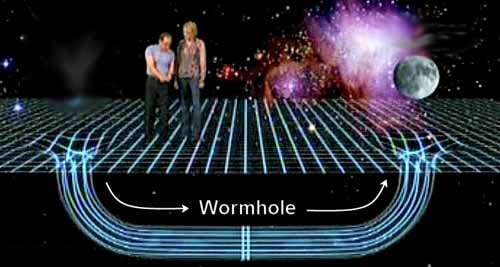
Water represents the collective unconscious that
which transports us consciously from reality to reality.
A boat is a vessel or life path.
The cone shape at the ends of the barge represents Wormholes.
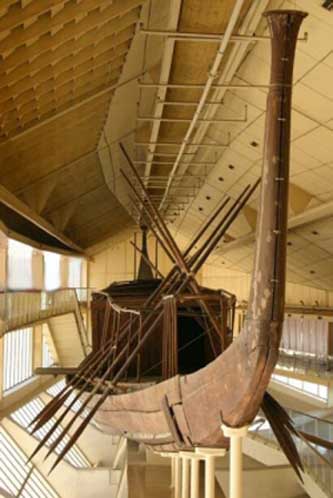
Khufu (King Cheops) allegedly built the Great Pyramid.
The Khufu ship is an intact full-size vessel from Ancient Egypt that was sealed into a pit in the Giza pyramid complex at the foot of the Great Pyramid of Giza around 2,500 BC. The ship was almost certainly built for Khufu (King Cheops), the second pharaoh of the Fourth Dynasty of the Old Kingdom of Egypt. It is one of the oldest, largest, and best-preserved vessels from antiquity. It measures 43.6 m (143 ft) long and 5.9 m (19.5 ft) wide.
It was thus identified as the world's oldest intact ship and has been described as "a masterpiece of woodcraft" that could sail today if put into water. However, the vessel may not have been designed for sailing (no rigging) or paddling (no room).
The ship was rediscovered in 1954 by Kamal el-Mallakh, undisturbed since it was sealed into a pit carved out of the Giza bedrock. It was built largely of Lebanon cedar planking in the "shell-first" construction technique, using unpegged tenons of Christ's thorn. The ship was built with a flat bottom composed of several planks, but no actual keel, with the planks and frames lashed together with Halfah grass, and has been reconstructed from 1,224 pieces which had been laid in a logical, disassembled order in the pit beside the pyramid. It took years for the boat to be painstakingly reassembled, primarily by the Egyptian Department of AntiquitiesÕ chief restorer, Ahmed Youssef Moustafa (later known as Hag Ahmed Youssef).
The history and function of the ship are not precisely known. It is of the type known as a "solar barge", a ritual vessel to carry the resurrected king with the sun god Ra across the heavens. However, it bears some signs of having been used in water, and it is possible that the ship was either a funerary "barge" used to carry the king's embalmed body from Memphis to Giza, or even that Khufu himself used it as a "pilgrimage ship" to visit holy places and that it was then buried for him to use in the afterlife. The Khufu ship has been on display to the public in a specially built museum at the Giza pyramid complex since 1982.
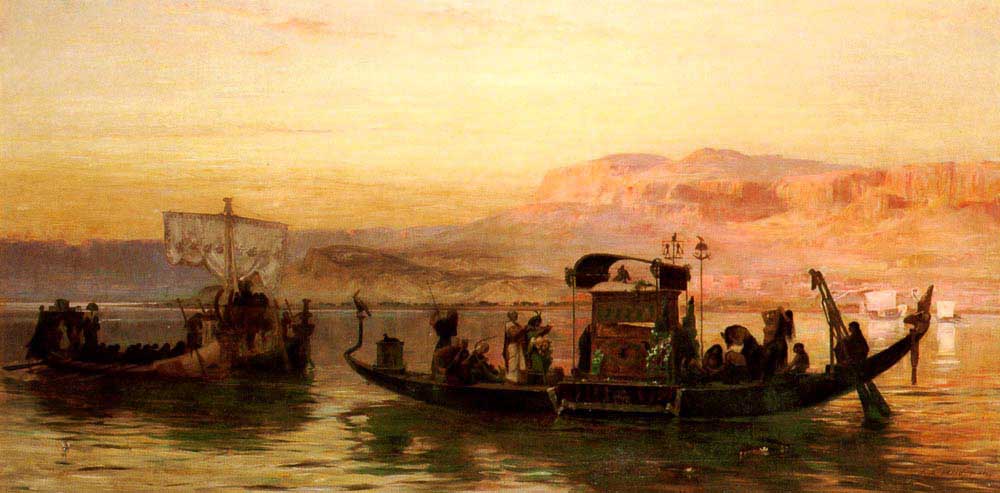
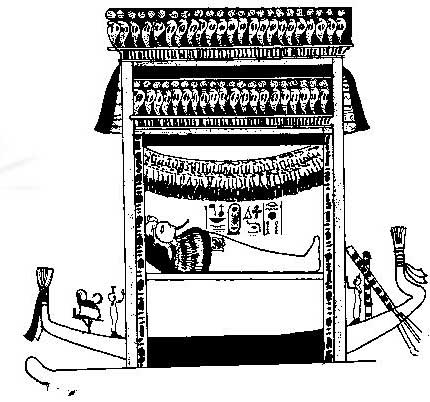
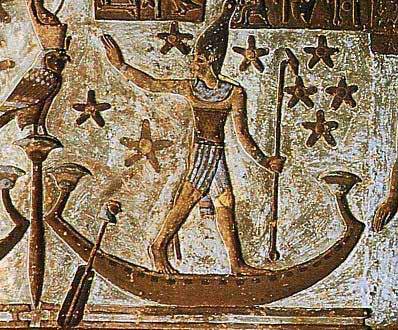
ANCIENT AND LOST CIVILIZATIONS